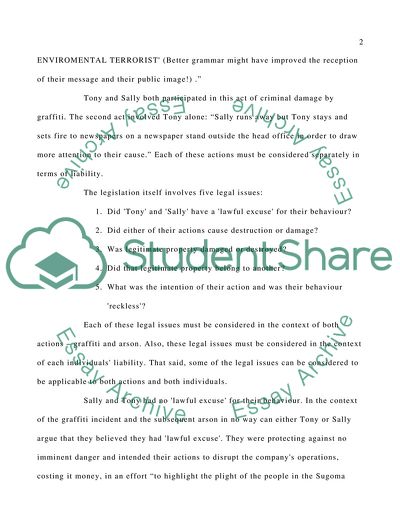Cite this document
(The Criminal Damage Act 1971 Report Example | Topics and Well Written Essays - 1500 words, n.d.)
The Criminal Damage Act 1971 Report Example | Topics and Well Written Essays - 1500 words. https://studentshare.org/law/1740954-criminal-law-coursework-assessment
The Criminal Damage Act 1971 Report Example | Topics and Well Written Essays - 1500 words. https://studentshare.org/law/1740954-criminal-law-coursework-assessment
(The Criminal Damage Act 1971 Report Example | Topics and Well Written Essays - 1500 Words)
The Criminal Damage Act 1971 Report Example | Topics and Well Written Essays - 1500 Words. https://studentshare.org/law/1740954-criminal-law-coursework-assessment.
The Criminal Damage Act 1971 Report Example | Topics and Well Written Essays - 1500 Words. https://studentshare.org/law/1740954-criminal-law-coursework-assessment.
“The Criminal Damage Act 1971 Report Example | Topics and Well Written Essays - 1500 Words”. https://studentshare.org/law/1740954-criminal-law-coursework-assessment.


